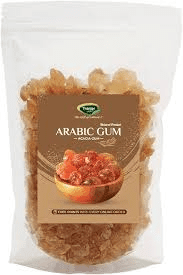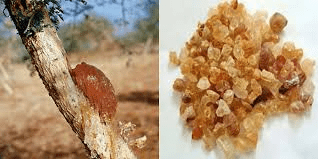Gum Arabic, also known as acacia gum, is a natural gum made from the sap of acacia trees. It is widely used in the food, pharmaceutical, and cosmetic industries as a stabilizer, emulsifier, and thickening agent. Processing, packaging, and exporting Gum Arabic involves several steps to ensure the product is of high quality and ready for international markets. This process starts with the harvesting of the gum, followed by cleaning, drying, grading, packaging, and finally exporting.
Harvesting Gum Arabic begins with the collection of the sap from acacia trees. The trees are tapped by making small incisions in their bark, allowing the sap to ooze out and harden into gum nodules. These nodules are usually collected by hand, making this a labor-intensive process. Harvesting typically occurs during the dry season, which helps ensure that the gum is collected in a dry state, reducing the risk of mold or spoilage.
After harvesting, the gum nodules must be cleaned to remove impurities such as dirt, bark, and other debris. This can be done by hand or using mechanical methods. The nodules are often soaked in water to soften them, making it easier to remove any unwanted materials. Once cleaned, the gum is dried in the sun or in drying chambers to reduce its moisture content. Proper drying is crucial as it prevents mold growth and ensures the gum’s longevity.
The dried Gum Arabic is then graded based on its color, size, and purity. Higher grades are typically lighter in color and more transparent, while lower grades may have more impurities and a darker color. The grading process is important because it determines the market value of the gum and its suitability for different applications. High-grade gum is often used in the food and pharmaceutical industries, while lower grades may be used in industrial applications.
After grading, the Gum Arabic is ground into a fine powder or left in its natural nodule form, depending on the intended use. Grinding is done using mechanical mills, which crush the gum into a fine, consistent powder. This powder can then be used in various applications such as food additives, pharmaceuticals, and cosmetics. For some uses, the gum may be further processed to remove specific impurities or to create specialized products.
Packaging Gum Arabic involves placing the cleaned, dried, and graded gum into suitable containers to protect it from contamination and moisture. The packaging must be airtight and moisture-proof to maintain the quality of the gum during storage and transportation. Common packaging materials include polyethylene bags, paper bags with plastic liners, and sealed drums. Proper labeling is also essential, providing information such as the grade of the gum, net weight, production date, and country of origin.
Labeling is an important part of the packaging process. Labels provide essential information to consumers and help to ensure that the gum complies with regulatory requirements. Accurate labeling ensures that consumers have the necessary information about the product and helps to track the gum in case of any issues. It also helps in meeting the import regulations of different countries.
Once packaged, the Gum Arabic is stored in a cool, dry place to maintain its quality until it is ready for distribution. Proper storage conditions are crucial to prevent the gum from absorbing moisture or becoming contaminated. Gum Arabic should be stored at a temperature of about 20-25°C (68-77°F) and away from direct sunlight. This helps to preserve the gum’s quality and extend its shelf life.
Exporting Gum Arabic involves additional steps to meet international standards and regulations. Exporters must ensure that the gum complies with both domestic and international regulations. This includes obtaining necessary certifications such as health certificates, which confirm that the gum has been processed and handled according to safety standards. The gum must also be accompanied by documentation such as certificates of origin, which verify where the gum was produced.
Transportation is a key component of exporting Gum Arabic. The gum must be handled carefully to prevent damage and contamination. For long-distance shipping, gum is often transported in bulk containers or cargo holds. Proper temperature and humidity control during transit is important to prevent the gum from absorbing moisture or becoming moldy. Gum Arabic should be transported at a stable temperature, ideally between 20-25°C (68-77°F).
Upon arrival in the destination country, the Gum Arabic undergoes customs clearance. This involves checking the documentation and inspecting the gum to ensure it meets the importing country’s regulations. If everything is in order, the gum is cleared for entry into the market and then distributed to manufacturers, wholesalers, or retailers.
Processing, packaging, and exporting Gum Arabic involves a detailed series of steps to ensure the product is high-quality and safe for consumers. From harvesting the sap to cleaning, drying, grading, packaging, and export compliance, each step is crucial in delivering a product that meets global standards.
By following best practices throughout the entire process, producers and exporters can provide Gum Arabic that satisfies international customers and adheres to regulatory requirements. Proper handling, documentation, and compliance with export regulations are essential to ensure successful export operations and maintain the quality of the gum throughout its journey.
How to Process Gum Arabic for Exportation

1. Harvesting: Harvest Gum Arabic from Acacia trees, usually during the dry season. The gum is collected by making incisions on the tree bark and allowing the gum to ooze out and harden. This process can take several weeks. Experienced laborers typically perform the harvesting to ensure maximum yield without damaging the trees.
2. Sorting and Cleaning: Sort the harvested gum to remove any impurities such as bark, leaves, and dust. This can be done manually or using mechanical sifters. Cleaning is crucial to ensure the purity of the gum, which affects its quality and market value.
3. Grading: Grade the gum based on color, size, and purity. There are generally three grades: Grade 1 (highest quality, lightest color), Grade 2, and Grade 3 (lower quality, darker color). Grading helps in determining the appropriate market and price for each batch.
4. Crushing and Grinding: Crush and grind the sorted and graded gum into smaller pieces or powder. This step makes it easier to dissolve and mix in various applications. Use mechanical grinders or mills for consistency.
5. Sieving: Sieve the crushed gum to obtain uniform particle sizes. This ensures consistency in quality and texture. Sieving also helps to remove any remaining impurities or oversized particles.
6. Sterilization: Sterilize the gum to eliminate any microbial contamination. This can be done using heat treatment or chemical methods. Sterilization ensures the gum meets food safety standards, especially for export to countries with strict regulations.
7. Drying: Dry the sterilized gum to reduce moisture content. Use drying ovens or air-dry in a controlled environment to prevent contamination. Proper drying extends the shelf life and maintains the quality of the gum.
8. Packaging: Package the dried gum in airtight containers to preserve its quality. Use food-grade packaging materials such as plastic bags, aluminum foil, or vacuum-sealed bags. Ensure the packaging protects the gum from moisture, air, and light.
9. Quality Control: Implement a rigorous quality control process to ensure the gum meets international standards. Test for parameters such as purity, moisture content, and microbial contamination. Consistent quality control maintains the reputation and marketability of the product.
10. Documentation: Prepare all necessary documentation for exportation, including certificates of origin, phytosanitary certificates, and any other regulatory documents required by the importing country. Accurate documentation ensures smooth customs clearance and compliance with international standards.
11. Storage: Store the packaged gum in a cool, dry, and dark environment to preserve its quality. Use climate-controlled storage facilities to prevent fluctuations in temperature and humidity. Proper storage extends the shelf life of the gum.
12. Transport Preparation: Prepare the gum for transport by arranging the packages on pallets for easier handling and shipping. Use sturdy pallets and secure the packages with stretch wrap or straps to prevent movement and damage during transit.
Read Also: Tomato Spotted Wilt Virus: Description, Damages Caused, Control and Preventive Measures
How to Package Gum Arabic for Exportation

1. Selecting Packaging Materials: Choose high-quality packaging materials that protect Gum Arabic from moisture, air, and light. Common materials include plastic bags, aluminum foil, and vacuum-sealed bags. Ensure the materials are food-grade and durable.
2. Sterilizing Packaging: Sterilize packaging materials to prevent contamination. Use methods such as hot water, steam, or chemical sanitizers to ensure the containers are clean and safe for use.
3. Filling Containers: Fill the sterilized containers with Gum Arabic using automated filling machines for consistency and efficiency. Ensure the filling process is precise to avoid overfilling or underfilling, which can lead to wastage or regulatory issues.
4. Sealing Containers: Seal the containers immediately after filling to prevent contamination and preserve freshness. Use tamper-evident seals to assure customers of the product’s integrity.
5. Labeling: Label each container with essential information, including product name, net weight, origin, production date, expiration date, batch number, and any required regulatory information. Ensure labels are clear, accurate, and compliant with the importing country’s regulations.
6. Secondary Packaging: Place the labeled containers in sturdy cardboard boxes or crates for additional protection. Use dividers, bubble wrap, or foam inserts to prevent movement and breakage during transit.
7. Palletizing: Arrange the boxes on pallets for easier handling and transport. Secure the boxes to the pallets using stretch wrap or shrink wrap. Proper palletizing helps in efficient loading, unloading, and storage.
8. Temperature Control: If required, use insulated containers or refrigerated transport to maintain Gum Arabic at a consistent temperature during shipping. Temperature control is crucial for preventing degradation of the product.
9. Preparing Shipping Documentation: Prepare all necessary shipping documentation, including invoices, packing lists, certificates of origin, and any other required documents. Ensure that all documentation is accurate and compliant with both the exporting and importing countries’ regulations.
10. Final Inspection: Conduct a final inspection of the packaged Gum Arabic and documentation before shipping. Address any issues to ensure that the shipment meets all quality and regulatory standards.
How to Export Gum Arabic for Profits
1. Market Research: Conduct thorough market research to identify demand, competition, and pricing in potential export markets. Understand the preferences, regulatory requirements, and quality standards of consumers in these markets.
2. Regulatory Compliance: Familiarize yourself with the export regulations of your country and the import regulations of the target market. Ensure that your Gum Arabic complies with all health, safety, and quality standards.
3. Certifications: Obtain necessary certifications such as organic or Fair Trade to enhance marketability and demonstrate commitment to sustainable practices. These certifications can increase consumer trust and access to premium markets.
4. Pricing Strategy: Develop a competitive pricing strategy that covers production, packaging, shipping, and other costs while ensuring profitability. Consider factors such as market demand, competition, and production costs.
5. Finding Buyers: Identify potential buyers through trade shows, online platforms, and industry networks. Establish relationships with importers, wholesalers, and retailers in the target market.
6. Negotiating Contracts: Negotiate clear and detailed contracts with buyers. Include terms of sale, payment methods, delivery schedules, and responsibilities of each party. Clear contracts prevent misunderstandings and disputes.
7. Logistics and Shipping: Plan the logistics of shipping, including selecting reliable shipping companies, managing documentation, and coordinating with freight forwarders. Efficient logistics ensure timely delivery and maintain product quality.
8. Quality Assurance: Implement strict quality control measures throughout processing, packaging, and shipping. Consistently high-quality products enhance your reputation and attract repeat business.
9. Marketing and Promotion: Develop a marketing strategy to promote your Gum Arabic. Use online marketing, trade fairs, and industry publications to reach potential buyers and showcase the benefits of your products.
10. Monitor and Adapt: Continuously monitor market trends, customer feedback, and sales performance. Be prepared to adapt your strategies based on changing market conditions and customer needs to maximize profitability.
Read Also: Bean Yellow Mosaic Virus: Description, Damages Caused, Control and Preventive Measures
Frequently Asked Questions (FAQ’s) About Gum Arabic

1. What is Gum Arabic?
Gum Arabic is a natural gum made from the hardened sap of Acacia trees, primarily Acacia senegal and Acacia seyal.
2. What are the uses of Gum Arabic?
Gum Arabic is used in food and beverages as a stabilizer and emulsifier, in pharmaceuticals for its medicinal properties, in cosmetics, and in the printing industry.
3. How is Gum Arabic harvested?
Gum Arabic is harvested by making incisions in the bark of Acacia trees and collecting the exuded sap, which hardens into gum.
4. What are the different grades of Gum Arabic?
Gum Arabic is typically graded into three categories based on color, size, and purity: Grade 1 (highest quality), Grade 2, and Grade 3 (lower quality).
5. How should Gum Arabic be stored?
Gum Arabic should be stored in a cool, dry, and dark environment in airtight containers to prevent moisture absorption and contamination.
6. What certifications are needed for exporting Gum Arabic?
Certifications such as organic, Fair Trade, and food safety certifications may be required depending on the importing country’s regulations.
7. How is Gum Arabic processed for export?
Processing involves sorting, cleaning, grading, crushing, grinding, sieving, sterilizing, drying, and packaging to ensure high quality and compliance with international standards.
8. What are the key export markets for Gum Arabic?
Key markets include the food and beverage industry, pharmaceuticals, cosmetics, and the printing industry in regions such as the United States, Europe, and Asia.
9. How can I ensure the quality of my Gum Arabic?
Implement rigorous quality control measures, regular testing for purity and microbial contamination, and proper storage practices.
10. What are the challenges in exporting Gum Arabic?
Challenges include regulatory compliance, maintaining quality standards, market competition, and logistics management. Addressing these requires careful planning and adherence to industry standards.






